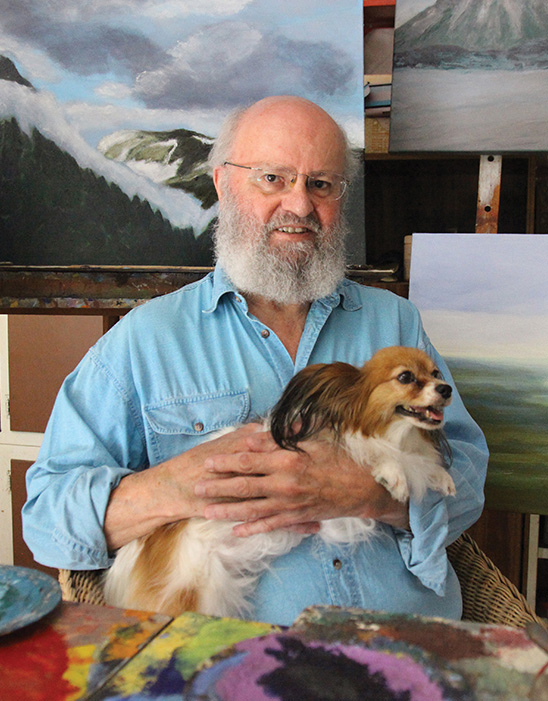Born in Holland in 1938, as war was about to engulf the world – to parents who risked all as members of the resistance – Piet grew up with an acute sense of purpose and determination.
At fourteen, he began his serious interest in art, not in accordance with the plans my father had for me.” He studied painting, drawing and art education in Amsterdam and the Hague from 1957 to 1969. After that, by studying Rembrandt, Vermeer and Titian, he taught himself glazing techniques: the art of using oils to lay down transparent layers of colour relationships to create subtle effects of mood, light and depth. He worked for ten years to perfect his use of oils, publicly exhibiting only his pastel works until he felt he was proficient enough to warrant professional status.
In 1981, while still living in his native Holland, an invitation came to apply for an open position on the faculty at the Queensland College of Art. By the start of the academic year of 1982, Piet and his wife, Hannah, were living in Brisbane and mingling within the Australian art world – at a distance of over fifteen thousand miles from their place of birth. While subsequently living in Townsville, Bribie Island, Melbourne and Margate Beach, he has remained connected to the Old World, returning regularly to visit throughout the Continent and exhibit his work in Holland and Belgium. After initiating this new Australian life, he went on to become an Australian citizen in 1985, living in this country ever since, and becoming fluent in its customs and sensibilities.
Noest’s life and work can therefore be seen as a site of meeting for two strikingly different cultures with radically divergent experiences of light, space and place. When speaking of his work, he emphasizes that the Dutch landscape has been thoroughly marked by thousands of years of human presence (based in western religion, pastoralism, mercantilism and nationalism), stretching back in time to before the Roman Empire. In contrast, he says, the human hand has rested much more lightly on the Australian continent. And so the open vastness of the light and the energy of the land have offered the painter not only a source of comparison, but also a fresh starting point for inspiration and meaning. Noest’s work is a touchstone for anyone seeking to understand the migration of twentieth-century European thought to Australia.
Noest’s most recent paintings document the rugged, mountainous landscape of Norway – a setting in which sea, snow, and fog constantly change and contrast with sheer, immutable rock. Capturing just a moment of the timeless interaction of geology, water and weather is the artist’s goal in these works – and they succeed at pitting the physicality of paint and a rawness of shape and line against the sublime ideal of Nature’s transcendence over human knowledge. The artist confronts the landscape and his materials in much the same manner: as a working medium through which he finds his way.
(From Piet Noest: Time and the Journey, catalogue essay by Carol Schwarzman for the exhibition PIET NOEST: all about art)



